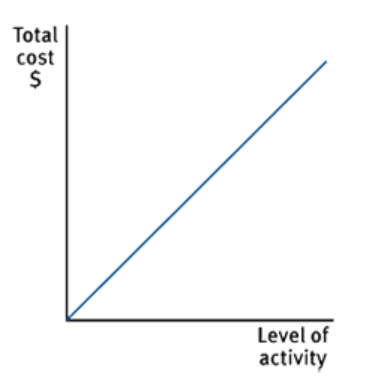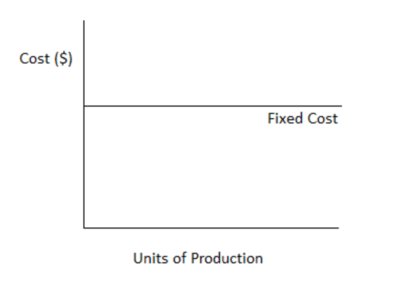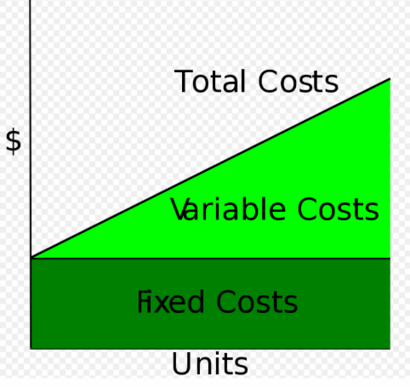QA4ODFL1/Structure/Financial management
Well-functioning open schools have sound financial management practices. To learn how various schools in the Commonwealth community manage their finances for the benefit of their learners, read the COL resource Setting Standards, Maintaining Quality: Quality Assurance Policies for Open Schooling. This resource gives information on what different open schools do to ensure prudent management of their finances.
Contents
The Behaviour of Costs in Distance Education
It is important for open school managers to understand cost drivers in distance education to be able to control them. Obviously, enrolment size is important as it determines whether income is likely to balance or even exceed costs. The main advantage of distance education lies in scale – an open school has potential to reach out to many more learners than a conventional face-to-face institution. In terms of costs, there is a minimum threshold number of students below which costs associated with investments made to establish and run the school will exceed the revenue. Thus, operating below that enrolment figure is not sustainable for the open school. If the enrolment goes beyond that threshold level, more income (whether it is government subsidy or user fees) is realised and it exceeds costs. In general, the higher the enrolment grows, the lower the per unit costs and the more sustainable the school becomes. It is therefore important for a school manager to understand what the minimum enrolment below which the school operates at a loss is. Knowing this will help the manager deliberately plan to keep the enrolment above that threshold minimum.
Variable costs
Variable costs are simply costs that vary with increased activity. A typical example is printing reading materials for a group of learners, the more the school prints, the higher the printing costs. However, note that the total cost of developing a reading materials for a course will remain the same whether the materials are used by 100, 500 or 1000 learners. The more learners use the materials, the lower is the unit cost of producing those materials. For example, if it costs $ 10 000 to develop a module and 100 learners make use of the module, the cost of producing the module per learner will be $10 000/100 = $100. If the same module is used by 500 learners, the cost of developing that module per learner will be $10 000/500 = $20, if used by 1000 learners the cost per learner goes down to $10 000/1000 = $ 10. This principle equally applies to the cost of running the open school; the more learners in the school the lower the cost or running the school per learner. This is the advantage of economies of scale which distance education providers take advantage of. With regards the example of the cost of producing a module cited above, it is important that the overall cost of that investment is amortised over the years when various learner cohorts make use of the reading resource. Figure 1 below illustrates variable costs.
Fig. 1: Variable costs
Source: Tamplin, T. (2021) [1]
Fixed costs
Fixed costs or non-variable costs are costs that do not change as the business activity increases or decreases. In ODFL, examples can be the cost of website hosting, the cost of insuring school property and utility bills. Figure 2 illustrates fixed costs.
Figure 2: Fixed costs
Source: Tamplin, T. (2021) [2]
Fixed costs tend to be based on agreed contracts, which are usually time bound. It is important for a school manager to understand the implications of going into such contracts which involve fixed costs because as long as the agreement is still in effect, the school is obliged to meet the cost.
Mixed costs
A mixed cost is a cost that contains both a fixed cost component and a variable cost component. In an open school, an example can be the monthly fixed rent of $5 000 and the monthly utilities bill of $300, giving a total monthly cost of $5 300. The total monthly cost of $5 300 is a mixed cost. It is important to understand the mix of these elements of a cost, so that one can predict how costs will change with different levels of activity.
Total cost
As highlighted above, understanding the behaviour of variable and fixed costs is important as it enables the school manager to keep total costs in check. Figure 3 below shows that total costs to be shouldered by a school are a function of fixed and variable costs.
Figure 3: Fixed and Variable Costs = Total Costs
Source: Wikipedia
This section on financial management has highlighted some of the basic financial literacy that a school manager needs to have to be able to manage school finances appropriately. In many institutions, the school manager is assisted by a school bursar or at least an accounting officer who is trained in handling and managing organisational finances more professionally. Wherever possible, it is recommended that open schools should engage such personnel to ensure that school finances are managed prudently.
Notes
- ↑ Tamplin, T. (2021) Fixed Costs: Definition. https://learn.financestrategists.com/explanation/cost-accounting/analysis-of-cost/fixed-costs/
- ↑ Tamplin, T. (2021) Fixed Costs: Definition. https://learn.financestrategists.com/explanation/cost-accounting/analysis-of-cost/fixed-costs/


